Deck 15: Using Therapeutic Modalities
Question
Question
Question
Question
Question
Question
Question
Question
Question
Question
Question
Question
Question
Question
Question
Question
Question
Question
Question
Question
Question
Question
Question
Question
Question
Question
Question
Question
Question
Question
Question
Question
Question
Question
Question
Question
Question
Question
Question
Question
Question
Question

Unlock Deck
Sign up to unlock the cards in this deck!
Unlock Deck
Unlock Deck
1/42
Play
Full screen (f)
Deck 15: Using Therapeutic Modalities
1
Please check all of the modalities that are classified as electrical energy modalities:
A) Contrast bath
B) Electrical stimulating current generators
C) Iontophoresis
D) Shortwave diathermy
E) Interferential currents
F) Ultrasound
G) Hivamat
A) Contrast bath
B) Electrical stimulating current generators
C) Iontophoresis
D) Shortwave diathermy
E) Interferential currents
F) Ultrasound
G) Hivamat
Electrical stimulating current generators
Iontophoresis
Interferential currents
Iontophoresis
Interferential currents
2
Please check all of the therapeutic reasons that this technique can be utilized. 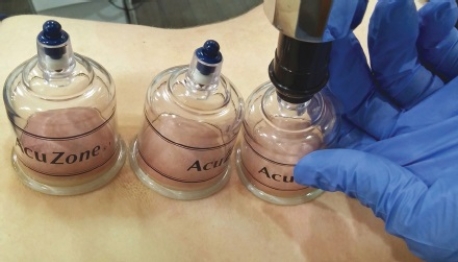
A) Improve blood flow
B) Increase edema
C) Reduce swelling
D) Elongate muscles
E) Reduce pain
F) Treat scar tissue in connective tissue
G) Reduce hematoma
H) Decrease nerve conduction velocity

A) Improve blood flow
B) Increase edema
C) Reduce swelling
D) Elongate muscles
E) Reduce pain
F) Treat scar tissue in connective tissue
G) Reduce hematoma
H) Decrease nerve conduction velocity
Improve blood flow
Reduce swelling
Reduce pain
Treat scar tissue in connective tissue
Reduce swelling
Reduce pain
Treat scar tissue in connective tissue
3
What method of thermal energy transfer is being demonstrated in the diagram? 
A) Conduction
B) Convection
C) Radiation
D) Ultraviolet
E) Conversion

A) Conduction
B) Convection
C) Radiation
D) Ultraviolet
E) Conversion
Conduction
4
What method(s) of thermal energy transfer is being demonstrated in the diagram? 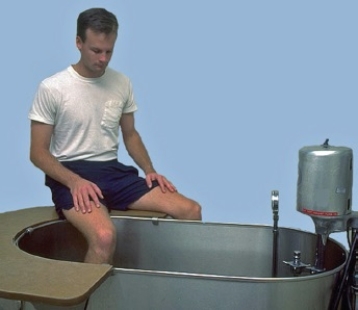
A) Conduction
B) Convection
C) Conduction and convection
D) Conversion and conduction
E) Conversion

A) Conduction
B) Convection
C) Conduction and convection
D) Conversion and conduction
E) Conversion

Unlock Deck
Unlock for access to all 42 flashcards in this deck.
Unlock Deck
k this deck
5
What condition was extracorporeal shock wave therapy used for?
A) Muscle atrophy
B) Kidney stone fragmentation
C) Tennis elbow
D) Plantar fasciitis
E) Non-union fractures
A) Muscle atrophy
B) Kidney stone fragmentation
C) Tennis elbow
D) Plantar fasciitis
E) Non-union fractures

Unlock Deck
Unlock for access to all 42 flashcards in this deck.
Unlock Deck
k this deck
6
Hydrocollator packs contain silicate gel in a cotton pad, which is immersed in thermostatically controlled hot water at a temperature of __________.
A) 140-150 degrees Fahrenheit
B) 150-160 degrees Fahrenheit
C) 160-170 degrees Fahrenheit
D) 170-180 degrees Fahrenheit
E) 180-190 degrees Fahrenheit
A) 140-150 degrees Fahrenheit
B) 150-160 degrees Fahrenheit
C) 160-170 degrees Fahrenheit
D) 170-180 degrees Fahrenheit
E) 180-190 degrees Fahrenheit

Unlock Deck
Unlock for access to all 42 flashcards in this deck.
Unlock Deck
k this deck
7
Which of the following is the appropriate temperature for this modality? 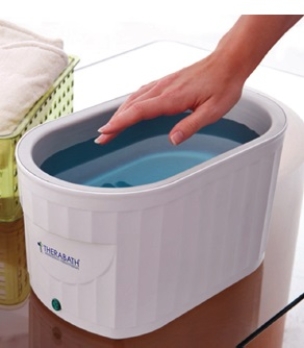
A) 110-114 degrees Fahrenheit
B) 116-120 degrees Fahrenheit
C) 126-130 degrees Fahrenheit
D) 131-135 degrees Fahrenheit
E) 137-140 degrees Fahrenheit

A) 110-114 degrees Fahrenheit
B) 116-120 degrees Fahrenheit
C) 126-130 degrees Fahrenheit
D) 131-135 degrees Fahrenheit
E) 137-140 degrees Fahrenheit

Unlock Deck
Unlock for access to all 42 flashcards in this deck.
Unlock Deck
k this deck
8
Which of the following statements is correct in regards to the application of cold?
A) When cold is applied to the skin for more than 20 minutes, vasoconstriction occurs
B) When cold is applied to the skin for less than 20 minutes, vasodilation occurs
C) When cold is applied to the skin for less than 20 minutes, the hunting response occurs
D) When cold is applied to the skin for more than 20 to 30 minutes, an intermittent period of vasodilation occurs
E) When cold is applied to the skin, the hunting response always occurs
A) When cold is applied to the skin for more than 20 minutes, vasoconstriction occurs
B) When cold is applied to the skin for less than 20 minutes, vasodilation occurs
C) When cold is applied to the skin for less than 20 minutes, the hunting response occurs
D) When cold is applied to the skin for more than 20 to 30 minutes, an intermittent period of vasodilation occurs
E) When cold is applied to the skin, the hunting response always occurs

Unlock Deck
Unlock for access to all 42 flashcards in this deck.
Unlock Deck
k this deck
9
Which of the following variables is controversial in regards to their physiological response to cryotherapy?
A) Muscle guarding
B) Edema
C) Metabolic rate
D) Pain perception
E) Collagen elasticity
A) Muscle guarding
B) Edema
C) Metabolic rate
D) Pain perception
E) Collagen elasticity

Unlock Deck
Unlock for access to all 42 flashcards in this deck.
Unlock Deck
k this deck
10
Which of the following statements is correct regarding this modality? 
A) The spray should be held at a 90 degree angle
B) The spray should only be 2-3 inches from the injured muscle
C) The spray should be perpendicular
D) The patient should do active stretching while the spray is being applied
E) The spray should cover the skin area 1-2 times

A) The spray should be held at a 90 degree angle
B) The spray should only be 2-3 inches from the injured muscle
C) The spray should be perpendicular
D) The patient should do active stretching while the spray is being applied
E) The spray should cover the skin area 1-2 times

Unlock Deck
Unlock for access to all 42 flashcards in this deck.
Unlock Deck
k this deck
11
Which of the following would be an inappropriate exercise to perform during cryokinetics for a lateral ankle sprain?
A) Toe raises
B) Walking
C) Towel scrunches
D) Theraband exercises
E) Passive stretching
A) Toe raises
B) Walking
C) Towel scrunches
D) Theraband exercises
E) Passive stretching

Unlock Deck
Unlock for access to all 42 flashcards in this deck.
Unlock Deck
k this deck
12
Which of the following electrical stimulation treatment protocols requires the current intensity to be extremely high, while approaching a noxious level?
A) Gate control
B) Descending pathway pain control
C) Opiate pain control theory
D) Muscle contraction
E) Muscle pumping
A) Gate control
B) Descending pathway pain control
C) Opiate pain control theory
D) Muscle contraction
E) Muscle pumping

Unlock Deck
Unlock for access to all 42 flashcards in this deck.
Unlock Deck
k this deck
13
Which of the following statements is INCORRECT about iontophoresis?
A) Positive ions are transported into the the tissue from the negative pole.
B) Negative ions are transported into the the tissue from the positive pole.
C) An active pad is unnecessary.
D) A dispersive pad does not need to be applied to a patient.
E) Treatment time is standard for all medications.
A) Positive ions are transported into the the tissue from the negative pole.
B) Negative ions are transported into the the tissue from the positive pole.
C) An active pad is unnecessary.
D) A dispersive pad does not need to be applied to a patient.
E) Treatment time is standard for all medications.

Unlock Deck
Unlock for access to all 42 flashcards in this deck.
Unlock Deck
k this deck
14
Which of the following is considered an inappropriate indication for utilizing interferential current?
A) Pain
B) Muscle re-education
C) Neuritis
D) Restricted mobility
E) Joint pain with swelling
A) Pain
B) Muscle re-education
C) Neuritis
D) Restricted mobility
E) Joint pain with swelling

Unlock Deck
Unlock for access to all 42 flashcards in this deck.
Unlock Deck
k this deck
15
Identify the correct pad placement to administer interferential currents on the back.
A)
B)
C)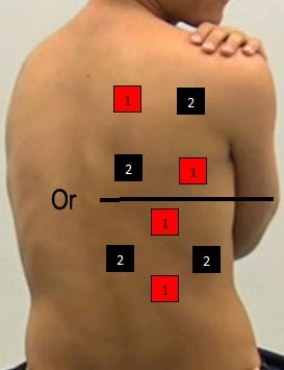
D)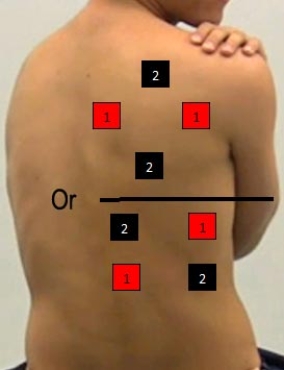
E)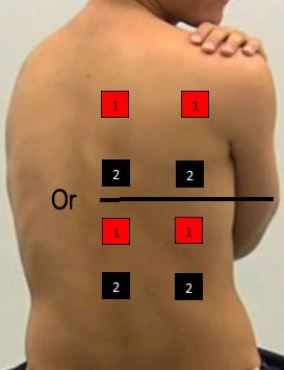
A)

B)

C)

D)

E)


Unlock Deck
Unlock for access to all 42 flashcards in this deck.
Unlock Deck
k this deck
16
Which of the following statements about diathermy is INCORRECT?
A) Diathermy is a more shallow, penetrating type of thermotherapy than infrared modalities.
B) The extent of muscle heating depends on the thickness of the muscle.
C) Shortwave diathermy heats deeper tissues by introducing a low-frequency electrical current.
D) A type of shortwave diathermy bypasses the patient as part of the circuit in order to heat the body.
E) Pulse diathermy increases the likelihood of any significant tissue temperature increase and reduces the patient's perception of heat.
A) Diathermy is a more shallow, penetrating type of thermotherapy than infrared modalities.
B) The extent of muscle heating depends on the thickness of the muscle.
C) Shortwave diathermy heats deeper tissues by introducing a low-frequency electrical current.
D) A type of shortwave diathermy bypasses the patient as part of the circuit in order to heat the body.
E) Pulse diathermy increases the likelihood of any significant tissue temperature increase and reduces the patient's perception of heat.

Unlock Deck
Unlock for access to all 42 flashcards in this deck.
Unlock Deck
k this deck
17
When performing a shortwave diathermy treatment, what dosage level desires the effects of mild heat sensation for 20 to 30 minutes daily for two weeks?
A) Lowest dose (I)
B) Low dose (II)
C) Medium dose (III)
D) Heavy dose (IV)
E) Intense dose (V)
A) Lowest dose (I)
B) Low dose (II)
C) Medium dose (III)
D) Heavy dose (IV)
E) Intense dose (V)

Unlock Deck
Unlock for access to all 42 flashcards in this deck.
Unlock Deck
k this deck
18
What condition would be treated using the heavy dose (IV) protocol for shortwave diathermy?
A) Acute ACL sprain
B) Subacute low back strain
C) Six-week post-injury of a grade 2 ulnar collateral ligament tear of the wrist
D) Four-month patellar tendinitis
E) Chronic trochanteric bursitis
A) Acute ACL sprain
B) Subacute low back strain
C) Six-week post-injury of a grade 2 ulnar collateral ligament tear of the wrist
D) Four-month patellar tendinitis
E) Chronic trochanteric bursitis

Unlock Deck
Unlock for access to all 42 flashcards in this deck.
Unlock Deck
k this deck
19
What characteristic of ultrasound separates it from infrared modalities?
A) Ultrasound does more than heat body tissue.
B) Ultrasound will not cause thermal burns.
C) Ultrasound has a shorter time period.
D) Ultrasound requires an athletic trainer to administer the treatment.
E) Ultrasound uses acoustic energy.
A) Ultrasound does more than heat body tissue.
B) Ultrasound will not cause thermal burns.
C) Ultrasound has a shorter time period.
D) Ultrasound requires an athletic trainer to administer the treatment.
E) Ultrasound uses acoustic energy.

Unlock Deck
Unlock for access to all 42 flashcards in this deck.
Unlock Deck
k this deck
20
What is it when performing a non-thermal ultrasound treatment, that results in an increased flow in the fluid around vibrating bubbles?
A) Resonance
B) Cavitation
C) Microstreaming
D) Piezoelectricity
E) Attenuation
A) Resonance
B) Cavitation
C) Microstreaming
D) Piezoelectricity
E) Attenuation

Unlock Deck
Unlock for access to all 42 flashcards in this deck.
Unlock Deck
k this deck
21
If a patient reported to the athletic training clinic for pre-practice treatment with a chronic history of patellar tendinitis, what would be the optimal treatment protocol?
A) Paraffin bath dip and wrap method for 8 minutes to warm the patellar tendon
B) Electrical stimulation muscle strengthening protocol to address the chronic patellar tendinitis
C) Ice bag for 15 minutes to address the pain
D) Warm whirlpool and thermokinetics for 20 minutes to prepare the patellar tendon for physical activity
E) Thermal ultrasound at 3MHz for about 5 minutes, 1.0 W/cm2
A) Paraffin bath dip and wrap method for 8 minutes to warm the patellar tendon
B) Electrical stimulation muscle strengthening protocol to address the chronic patellar tendinitis
C) Ice bag for 15 minutes to address the pain
D) Warm whirlpool and thermokinetics for 20 minutes to prepare the patellar tendon for physical activity
E) Thermal ultrasound at 3MHz for about 5 minutes, 1.0 W/cm2

Unlock Deck
Unlock for access to all 42 flashcards in this deck.
Unlock Deck
k this deck
22
When providing a non-thermal ultrasound treatment over an acute injury to 1st metatarsal phalangeal joint in which the patient has Raynaud's phenomena, what would be the best application technique to use?
A) Underwater application in warm water to avoid the adverse reaction
B) Direct contact using a large transducer sized head because of the keratine layer on the plantar surface of the foot
C) Gel pad application over the joint area, being sure to coat both sides with ultrasound gel
D) Combination electrical stimulation and ultrasound to modulate the acute pain
E) Underwater application in cold water to address the swelling
A) Underwater application in warm water to avoid the adverse reaction
B) Direct contact using a large transducer sized head because of the keratine layer on the plantar surface of the foot
C) Gel pad application over the joint area, being sure to coat both sides with ultrasound gel
D) Combination electrical stimulation and ultrasound to modulate the acute pain
E) Underwater application in cold water to address the swelling

Unlock Deck
Unlock for access to all 42 flashcards in this deck.
Unlock Deck
k this deck
23
When treating a small localized area, what would be the best way to move the transducer head?
A) Non-overlapping circular patterns
B) Stroking pattern
C) Gel pad technique using circular patterns
D) Overlapping circular patterns
E) Allow it to stay in one place
A) Non-overlapping circular patterns
B) Stroking pattern
C) Gel pad technique using circular patterns
D) Overlapping circular patterns
E) Allow it to stay in one place

Unlock Deck
Unlock for access to all 42 flashcards in this deck.
Unlock Deck
k this deck
24
What is the type of the modality illustrated in the picture? 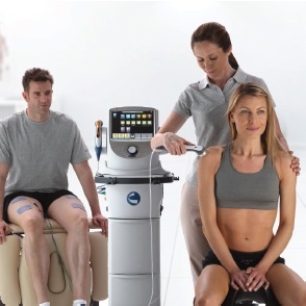
A) Interferential current unit
B) LASER Therapy unit
C) Ultrasound and electrical stimulation combination unit
D) Low-Intensity Stimulator unit
E) Electrical stimulating unit

A) Interferential current unit
B) LASER Therapy unit
C) Ultrasound and electrical stimulation combination unit
D) Low-Intensity Stimulator unit
E) Electrical stimulating unit

Unlock Deck
Unlock for access to all 42 flashcards in this deck.
Unlock Deck
k this deck
25
Which of the following statements is correct in regards to differences between phonophoresis and iontophoresis?
A) Iontophoresis has the capability of greater penetration.
B) Phonophoresis has a greater chance of producing a chemical burn.
C) Iontophoresis has a greater advantage because it allows the medicine to bypass the gastrointestinal system.
D) Phonophoresis involves driving whole molecules across the skin into the tissues.
E) Iontophoresis is more economical.
A) Iontophoresis has the capability of greater penetration.
B) Phonophoresis has a greater chance of producing a chemical burn.
C) Iontophoresis has a greater advantage because it allows the medicine to bypass the gastrointestinal system.
D) Phonophoresis involves driving whole molecules across the skin into the tissues.
E) Iontophoresis is more economical.

Unlock Deck
Unlock for access to all 42 flashcards in this deck.
Unlock Deck
k this deck
26
What is being performed in the following illustration? 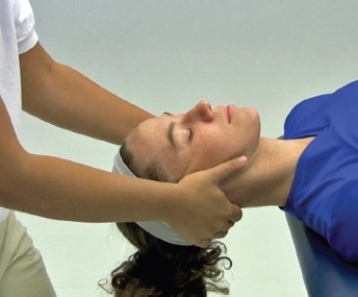
A) Manual cervical traction
B) Mechanical scapular traction
C) Positional cervical traction
D) Inverted cervical
E) Manual cervical traction with joint mobilization

A) Manual cervical traction
B) Mechanical scapular traction
C) Positional cervical traction
D) Inverted cervical
E) Manual cervical traction with joint mobilization

Unlock Deck
Unlock for access to all 42 flashcards in this deck.
Unlock Deck
k this deck
27
In the following illustration, what is a drawback to this particular modality? 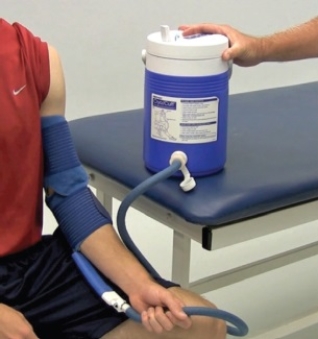
A) It is quite expensive.
B) It is difficult to operate.
C) It must be continually rechilled.
D) It is cumbersome to transport.
E) It cannot be operated by the patient.

A) It is quite expensive.
B) It is difficult to operate.
C) It must be continually rechilled.
D) It is cumbersome to transport.
E) It cannot be operated by the patient.

Unlock Deck
Unlock for access to all 42 flashcards in this deck.
Unlock Deck
k this deck
28
Which of the following illustrations represents the type of massage technique that is used in conjunction with cupping to bring about a varied stimulation of the sensory nerves over heavy muscle areas?
A)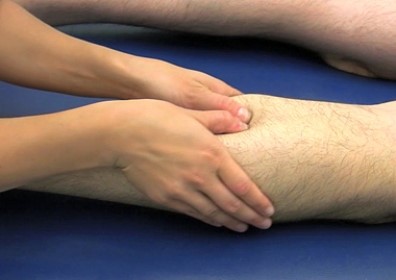
B)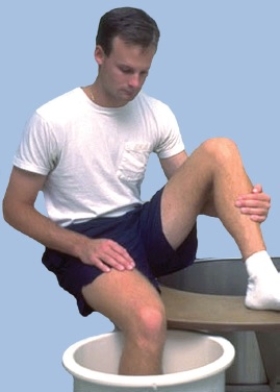
C)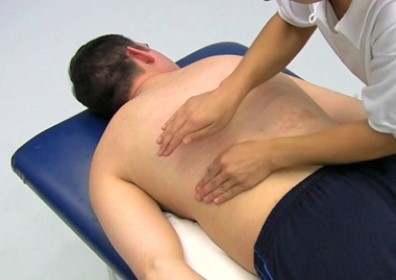
D)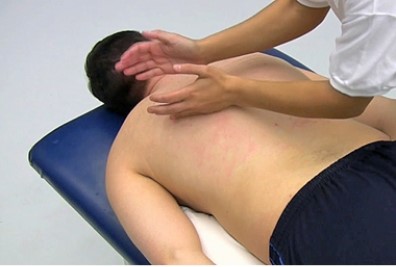
E)
A)

B)

C)

D)

E)


Unlock Deck
Unlock for access to all 42 flashcards in this deck.
Unlock Deck
k this deck
29
Which of the following illustrations represents the type of massage technique that is used to stretch the underlying tissue and increase circulation around the joint?
A)
B)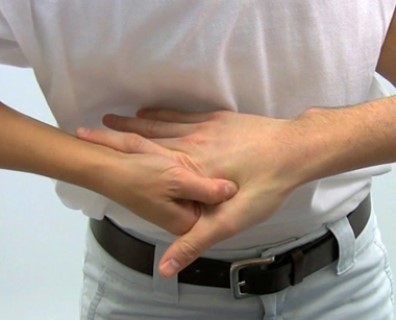
C)
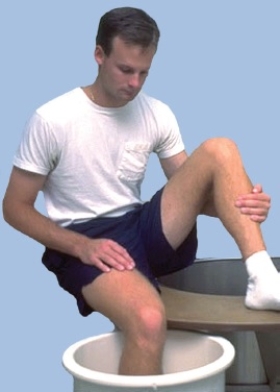
D)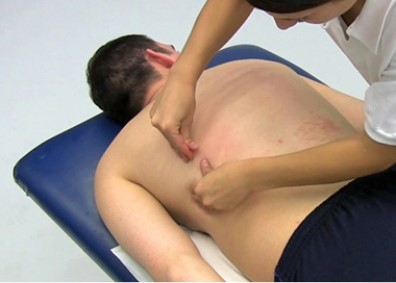
A)

B)

C)


D)


Unlock Deck
Unlock for access to all 42 flashcards in this deck.
Unlock Deck
k this deck
30
What massage guideline for an effective massage would be neglected if an athletic trainer performed an effleurage massage on an athlete's calf on the same leg that is being treated for a cut on the thigh that may be infected?
A) Making the patient comfortable
B) Developing a confident, gentle approach when massaging
C) Ensuring proper lymphatic and venous drainage
D) Stroking toward the heart whenever possible
E) Knowing when not to use massage
A) Making the patient comfortable
B) Developing a confident, gentle approach when massaging
C) Ensuring proper lymphatic and venous drainage
D) Stroking toward the heart whenever possible
E) Knowing when not to use massage

Unlock Deck
Unlock for access to all 42 flashcards in this deck.
Unlock Deck
k this deck
31
What is the difference between Chinese acupuncture and dry needling?
A) There is no difference.
B) Dry needling focuses on treating pain associated with myofascial trigger points while Chinese acupuncture treats muscular condition and non-muscular conditions.
C) Chinese acupuncture focuses on treating pain associated with myofascial trigger points while dry needling treats muscular condition and non-muscular conditions.
D) Chinese acupuncture is a type of massage while dry needling is not.
E) Dry needling is primarily used to improve range of motion and disability while Chinese acupuncture is used to increase ROM through joint mobilizations.
A) There is no difference.
B) Dry needling focuses on treating pain associated with myofascial trigger points while Chinese acupuncture treats muscular condition and non-muscular conditions.
C) Chinese acupuncture focuses on treating pain associated with myofascial trigger points while dry needling treats muscular condition and non-muscular conditions.
D) Chinese acupuncture is a type of massage while dry needling is not.
E) Dry needling is primarily used to improve range of motion and disability while Chinese acupuncture is used to increase ROM through joint mobilizations.

Unlock Deck
Unlock for access to all 42 flashcards in this deck.
Unlock Deck
k this deck
32
What is the minimal amount of time that the modality provides heat?
A) 30 minutes
B) 1 hour
C) 4 hours
D) 8 hours
E) 24 hours
A) 30 minutes
B) 1 hour
C) 4 hours
D) 8 hours
E) 24 hours

Unlock Deck
Unlock for access to all 42 flashcards in this deck.
Unlock Deck
k this deck
33
Electrical, electromagnetic, and sound energy treatments have different physical mechanisms of action. However, which of the following is a common aspect that they share?
A) All of them rely on convection.
B) All of them compress tissues.
C) All of them heat tissues.
D) All of them produce vasoconstriction.
E) All of them rely on the piezoelectric effect.
A) All of them rely on convection.
B) All of them compress tissues.
C) All of them heat tissues.
D) All of them produce vasoconstriction.
E) All of them rely on the piezoelectric effect.

Unlock Deck
Unlock for access to all 42 flashcards in this deck.
Unlock Deck
k this deck
34
Which of the following types of energy is transferred when cryotherapy techniques are employed for treatment?
A) Electrical energy
B) Electromagnetic energy
C) Sound energy
D) Mechanical energy
E) Thermal energy
A) Electrical energy
B) Electromagnetic energy
C) Sound energy
D) Mechanical energy
E) Thermal energy

Unlock Deck
Unlock for access to all 42 flashcards in this deck.
Unlock Deck
k this deck
35
Which of the following variables will have a decreased physiological response to thermotherapy?
A) Edema
B) Collagen elasticity
C) Blood flow
D) Metabolic rate
E) Joint stiffness
A) Edema
B) Collagen elasticity
C) Blood flow
D) Metabolic rate
E) Joint stiffness

Unlock Deck
Unlock for access to all 42 flashcards in this deck.
Unlock Deck
k this deck
36
Which of the following is a limitation of hydrocollator packs?
A) They usually do not significantly heat deeper tissues.
B) Their use does not result in general relaxation.
C) They aggravate muscle spasms.
D) Their use leads to an increase in pain perception.
E) They contain toxic substances, which cause allergic reactions in some patients.
A) They usually do not significantly heat deeper tissues.
B) Their use does not result in general relaxation.
C) They aggravate muscle spasms.
D) Their use leads to an increase in pain perception.
E) They contain toxic substances, which cause allergic reactions in some patients.

Unlock Deck
Unlock for access to all 42 flashcards in this deck.
Unlock Deck
k this deck
37
Which of the following is the reason for cold water immersion techniques increasing the likelihood of swelling?
A) The extremities are in a gravity-dependent position during therapy.
B) The buoyancy of water causes the limbs to move.
C) These techniques depend on extreme temperatures.
D) These techniques require a lot of fluid movement.
E) The permeability of skin allows water to seep into the body.
A) The extremities are in a gravity-dependent position during therapy.
B) The buoyancy of water causes the limbs to move.
C) These techniques depend on extreme temperatures.
D) These techniques require a lot of fluid movement.
E) The permeability of skin allows water to seep into the body.

Unlock Deck
Unlock for access to all 42 flashcards in this deck.
Unlock Deck
k this deck
38
Which of the following frequencies of electrical stimulation does tetany occur at in muscles?
A) Approximately 10 pulses per second
B) Approximately 20 pulses per second
C) Appromixately 30 pulses per second
D) Approximately 40 pulses per second
E) Approximately 50 pulses per second
A) Approximately 10 pulses per second
B) Approximately 20 pulses per second
C) Appromixately 30 pulses per second
D) Approximately 40 pulses per second
E) Approximately 50 pulses per second

Unlock Deck
Unlock for access to all 42 flashcards in this deck.
Unlock Deck
k this deck
39
Which of the following is the single most common problem associated with iontophoresis?
A) Vasoconstriction of arterioles
B) Temporary immobilization
C) Chemical burn
D) Increased blood pressure
E) Stagnation of blood circulation
A) Vasoconstriction of arterioles
B) Temporary immobilization
C) Chemical burn
D) Increased blood pressure
E) Stagnation of blood circulation

Unlock Deck
Unlock for access to all 42 flashcards in this deck.
Unlock Deck
k this deck
40
Which of the following is a nonthermal effect of therapeutic ultrasound that can alter cell membrane structure and function?
A) Microstreaming
B) Cavitation
C) Agitation
D) Resistance
E) Overcooling
A) Microstreaming
B) Cavitation
C) Agitation
D) Resistance
E) Overcooling

Unlock Deck
Unlock for access to all 42 flashcards in this deck.
Unlock Deck
k this deck
41
The proposed frequency resonance hypothesis relates to:
A) the production of oscillation voltage in therapeutic ultrasound by the expansion and contraction of crystals.
B) the absorption and subsequent scattering of ultrasound by subcutaneous fat.
C) the absorption of the mechanical energy of ultrasound by proteins and protein complexes.
D) the increase in the frequency of ultrasound waves as they penetrate deeper tissues.
E) the nonuniform distribution of ultrasound energy.
A) the production of oscillation voltage in therapeutic ultrasound by the expansion and contraction of crystals.
B) the absorption and subsequent scattering of ultrasound by subcutaneous fat.
C) the absorption of the mechanical energy of ultrasound by proteins and protein complexes.
D) the increase in the frequency of ultrasound waves as they penetrate deeper tissues.
E) the nonuniform distribution of ultrasound energy.

Unlock Deck
Unlock for access to all 42 flashcards in this deck.
Unlock Deck
k this deck
42
Which of the following categories of massage strokes includes cupping, hacking, and pinching movements?
A) Friction
B) Effleurage
C) Petrissage
D) Tapotement
E) Vibration
A) Friction
B) Effleurage
C) Petrissage
D) Tapotement
E) Vibration

Unlock Deck
Unlock for access to all 42 flashcards in this deck.
Unlock Deck
k this deck



